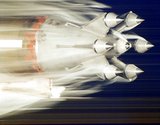Final AEW&C Peace Eye aircraft delivered to ROKAF
Boeing delivered the fourth 737 Airborne Early Warning and Control (AEW&C) Peace Eye aircraft to the Republic of Korea Air Force (ROKAF) on 24 October, bringing the delivery programme to a close.
The 737 AEW&C aircraft is designed to provide airborne battle management capability with an advanced multirole electronically scanned radar and 10 state-of-the-art mission crew consoles that are able to track airborne and maritime targets simultaneously. The mission crew can direct offensive and defensive forces while maintaining continuous surveillance of the operational area.
Three of the four 737-based Peace Eye aircraft were modified by Korea Aerospace Industries (KAI) at its facility in Sacheon. The company also supported testing of the aircraft.
A number of other Korean companies made key contributions to the programme, demonstrating the continuing success of Boeing’s partnerships with local industry. These companies included: Korean Air Aerospace Division (technical services, spares and related parts-handling services); LIG Nex1 (networking and training); Samsung Thales (mission crew training); Boeing Training Services Korea (flight crew training); and Huneed Technologies (ground-based datalinks communications system).
Rick Heerdt, Boeing vice president of Airborne Surveillance, Command and Control, said: ‘We delivered five weeks ahead of schedule thanks to the hard work, focus and close collaboration among the ROKAF, Korea's Defense Acquisition Program Administration, Boeing and our in-country suppliers. Throughout the programme, KAI demonstrated its outstanding technical capability and modification experience in delivering this powerful airborne surveillance and battle management capability that enhances the security of the Korean peninsula.’
The AEW&C team has also delivered all ground support segments for mission crew training, mission support and system maintenance to ROKAF Base Gimhae, the Peace Eye fleet's main operating base. Boeing is providing on-site technical support, training and spare parts as part of an interim support programme, allowing for seamless support of the Peace Eye fleet as it transitions to a through-life support programme.
More from Digital Battlespace
-
![Babcock nears first customer for Nomad AI translation tool]()
Babcock nears first customer for Nomad AI translation tool
Nomad can provide militaries with real-time intelligence, saving critical time on the battlefield.
-
![AUSA 2025: Israel’s Asio Technologies to supply hundreds of improved Taurus tactical systems]()
AUSA 2025: Israel’s Asio Technologies to supply hundreds of improved Taurus tactical systems
Taurus operates alongside the Israel Defense Forces’ Orion system which supports mission management across tens of thousands of manoeuvring forces, from squad leaders to battalion commanders.
-
![AUSA 2025: Kopin pushes micro-LED plans as China moves faster]()
AUSA 2025: Kopin pushes micro-LED plans as China moves faster
The plan for the new displays follows fresh investment in Kopin’s European facilities by Theon and an order for head-up displays in fielded aircraft, with funding from the US Department of Defense.
-
![AUSA 2025: Persistent Systems to complete its largest order by year’s end]()
AUSA 2025: Persistent Systems to complete its largest order by year’s end
Persistent Systems received its largest ever single order for its MPU5 devices and other systems earlier this month and has already delivered the 50 units to the US Army’s 4th Infantry Division.
-
![Aselsan brings in dozens of companies and systems under the Steel Dome umbrella]()
Aselsan brings in dozens of companies and systems under the Steel Dome umbrella
Turkey has joined the family of countries attempting to establish a multilayered air defence system with government approval in August 2024 for the effort landed by Aselsan. Dubbed Steel Dome, the programme joins Israel’s Iron Dome, the US Golden Dome, India’s Mission Sudarshan Chakra and South Korea’s low-altitude missile defence system.
-
![DSEI 2025: MARSS unveils new agnostic multidomain C4 system]()
DSEI 2025: MARSS unveils new agnostic multidomain C4 system
MARSS’ NiDAR system has been deployed using sensors from static platforms to provide detection and protection for static sights, such as critical infrastructure, ports and military bases.



























